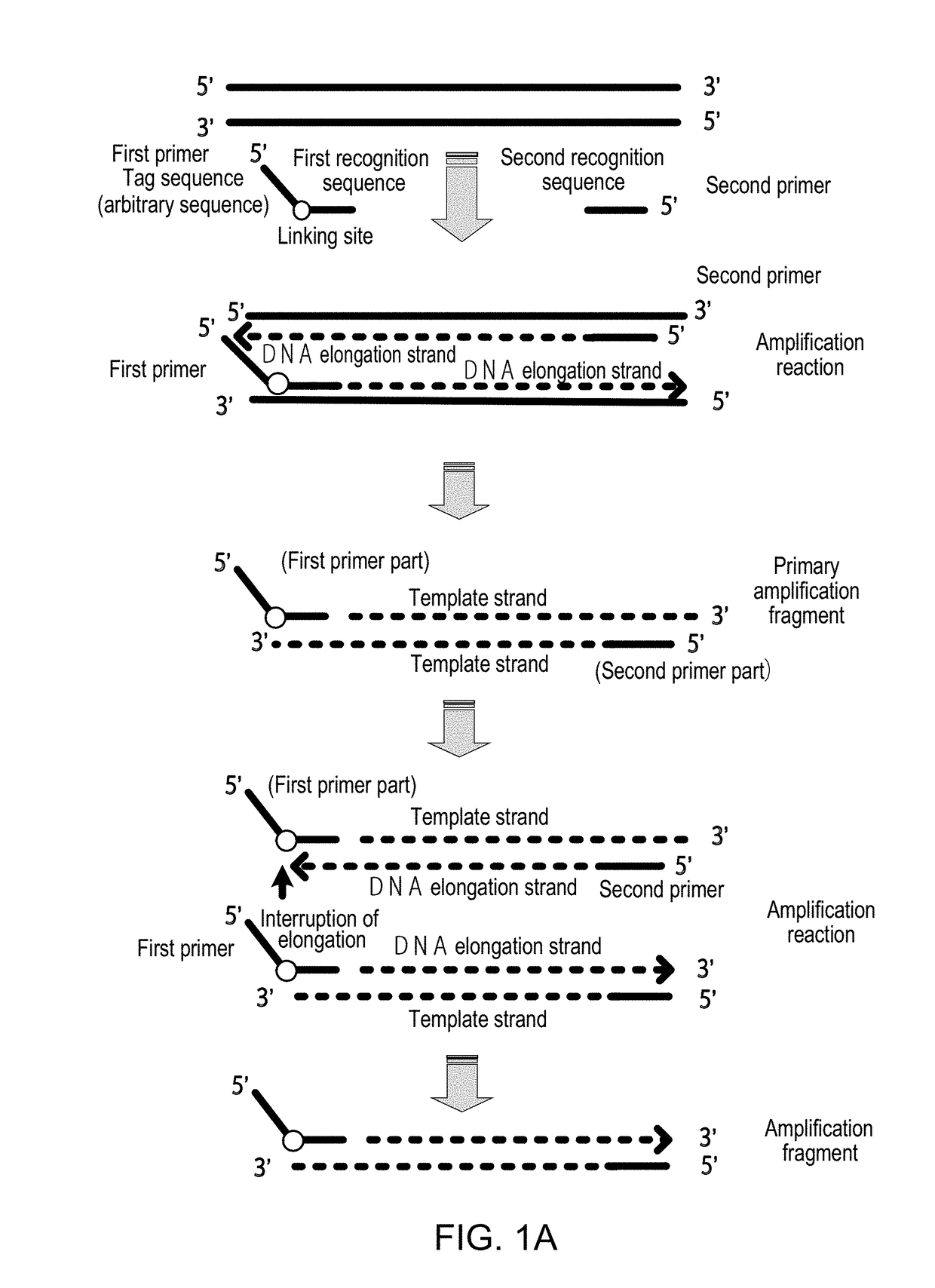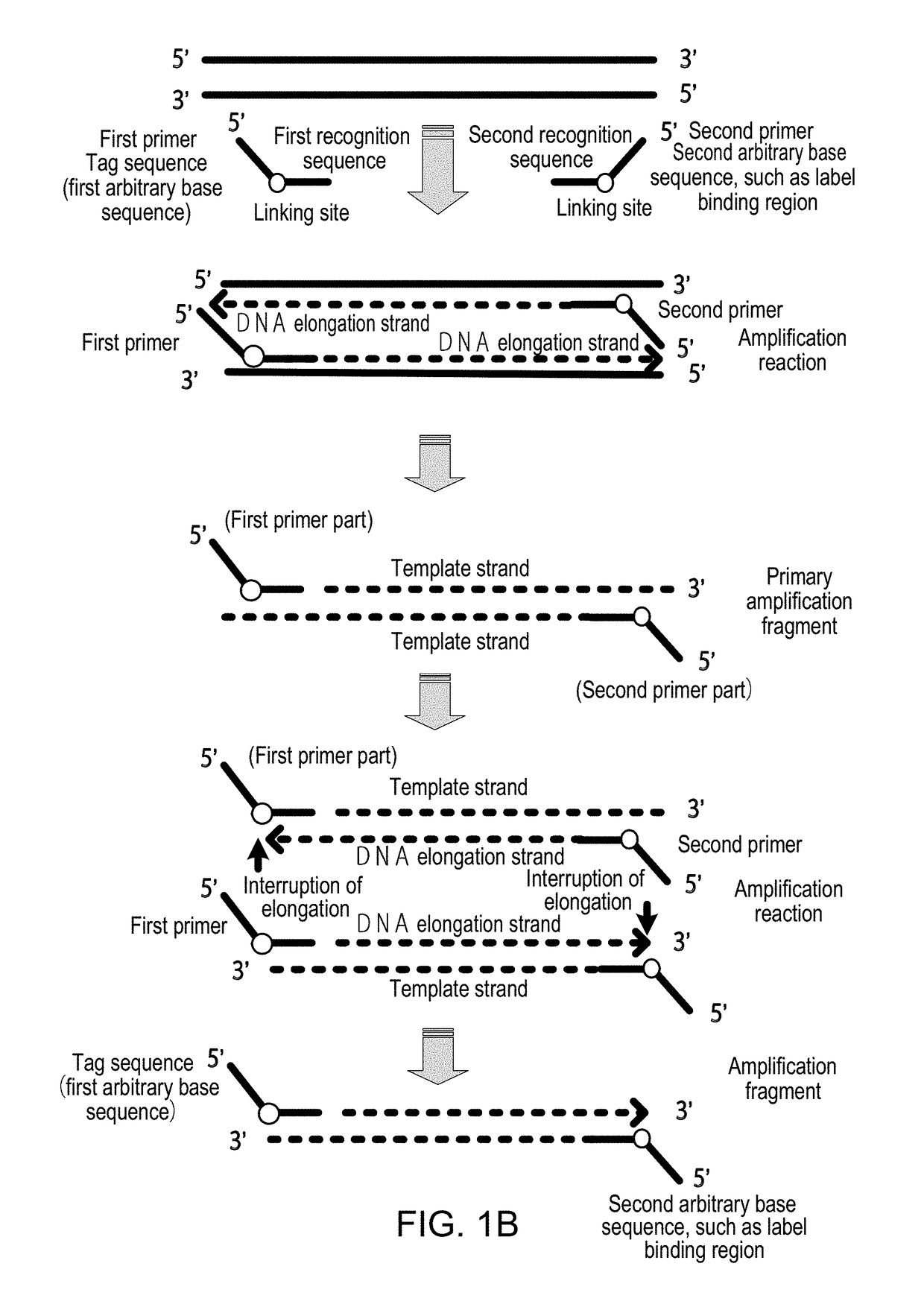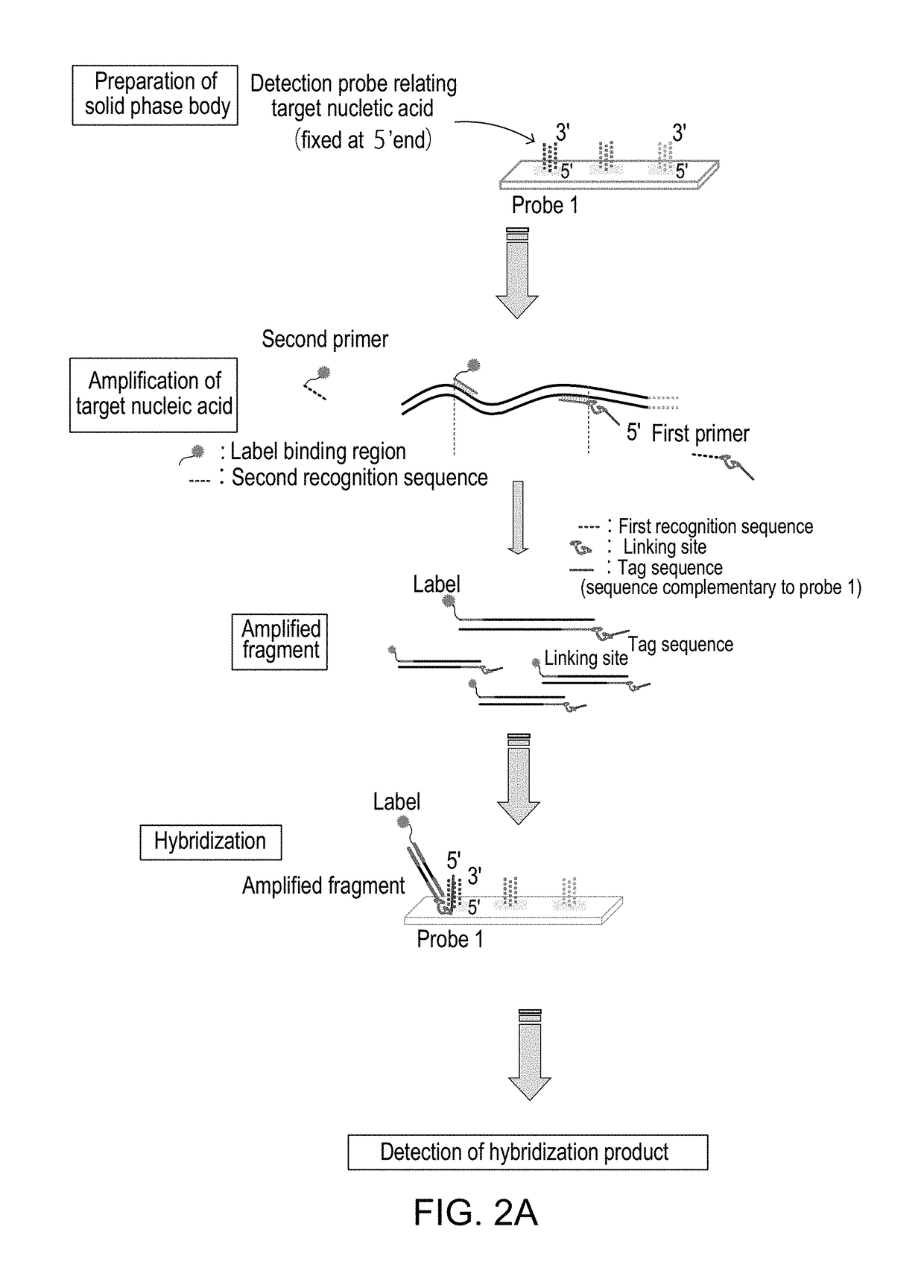Method for Detecting Target Nucleic Acid
a nucleic acid and target technology, applied in the field of target nucleic acid detection, can solve the problems of reducing hybridization efficiency, reducing amplification efficiency, and not very efficient recognition of specific base sequences by specific substances, and achieve the effect of detecting more accurately and convenient operation
- Summary
- Abstract
- Description
- Claims
- Application Information
AI Technical Summary
Benefits of technology
Problems solved by technology
Method used
Image
Examples
example 1
[0310]In the following examples, the target nucleic acid was detected by the following procedures in the detection method of the present invention. The procedures are explained below in order.
[0311](1) Preparation of DNA microarray
[0312](2) Preparation and amplification of target nucleic acid and primers
[0313](3) Hybridization
[0314](4) Detection using scanner
[0315](1) Preparation of DNA microarray
[0316]Aqueous solutions of dissolved synthetic oligo-DNA (Nihon Gene Research Laboratories, Inc.) modified with amino groups at the 3′ ends were spotted with a NGK Insulators, Ltd. Geneshot® spotter as detection probes. For the synthetic oligo-DNA sequences, the following 33 sequences capable of rapid hybridization were selected from SEQ ID NOS:1 to 100.
TABLE 3NameSeq(5→3′)SEQ. ID.D1-001TGTTCTCTGACCAATGAATCTGC1D1-002TGGAACTGGGAACGCTTTAGATG2D1-003TTCGCTTCGTTGTAATTTCGGAC3D1-005TAGCCCAGTGATTTATGACATGC5D1-006CGCTCTGGTTACTATTGGACGTT6D1-010GAGTAGCAGGCAAATACCCTAGA10D1-012AGTCATACAGTGAGGACCAAATG12D...
example 2
[0344]In this example, (1) preparation of the DNA microarray, (2) preparation and amplification of the target nucleic acid and primers, (3) hybridization and (4) detection using the scanner were performed as in Example 1 to detect the target nucleic acid, except that in preparing the DNA microarrays in (1) of Example 1, glass plates (Toyo Kohan Co. geneslide) were used in place of the plastic plates, the 33 sequences D1-001—D1-0032 and D1-100 shown in Table 1 were selected as the base sequences of the detection probes, and a reagent of the following composition was used as the hybridization reagent in (3) hybridization. As in Example 1, the hybridization signals obtained using the P3 primers (tag sequence+linking site X+recognition sequence) were obviously at least 10 times stronger than those obtained using the P2 primers (tag sequence+recognition sequence), even without a denaturing step.
Hybri control1.5 μlPrimer Mix3.5 μlHybri solution9.0 μlSub total14.0 μl Amplified sample4.0 μl...
example 3
[0345]In this example, target nucleic acids were detected by the following methods.[0346](1) Preparation of Membrane-Type DNA Microarrays
[0347]Capture DNA probe solutions comprising the base sequences shown in the following table were spotted on Merck Millipore Hi-Flow Plus membrane plates (60 mm×600 mm), using a NGK Insulators, Ltd. Geneshot® spotter with the discharge unit (inkjet method) described in Japanese Patent Application Publication No. 2003-75305. For the synthetic oligo-DNA sequences, the 44 sequences D1-001-D1-003, D1-005, D1-006, D1-009-D1-012, D1-014-D1-016, D1-020, D1-023, D1-025-D1-027, D1-030, D1-032, D1-035, D1-037, D1-038, D1-040, D1-041, D1-044, D1-045, D1-049-D1-053, D1-062, D1-064, D1-065, D1-077, D1-079, D1-081, D1-084, D1-089, D1-090, D1-094, D1-095 D1-097, and D1-100 shown Table 1 of the literature (Analytical Biochemistry 364 (2007) 78-85) were used as probes, and arrayed as shown in FIG. 15. The sequences were modified with amino groups at the 3′ end of t...
PUM
| Property | Measurement | Unit |
|---|---|---|
| nucleic acid chromatography | aaaaa | aaaaa |
| fluorescence | aaaaa | aaaaa |
| phosphorescence | aaaaa | aaaaa |
Abstract
Description
Claims
Application Information
 Login to View More
Login to View More - R&D
- Intellectual Property
- Life Sciences
- Materials
- Tech Scout
- Unparalleled Data Quality
- Higher Quality Content
- 60% Fewer Hallucinations
Browse by: Latest US Patents, China's latest patents, Technical Efficacy Thesaurus, Application Domain, Technology Topic, Popular Technical Reports.
© 2025 PatSnap. All rights reserved.Legal|Privacy policy|Modern Slavery Act Transparency Statement|Sitemap|About US| Contact US: help@patsnap.com



